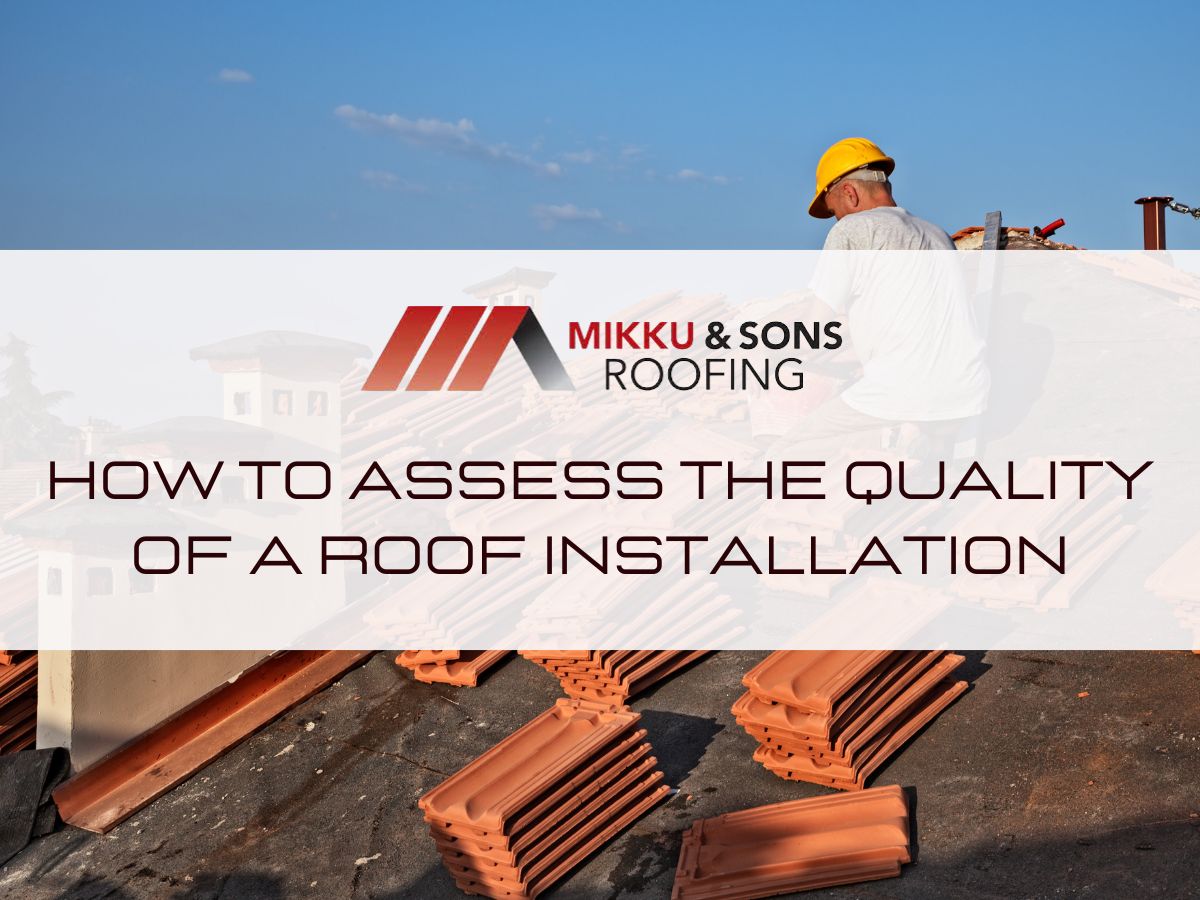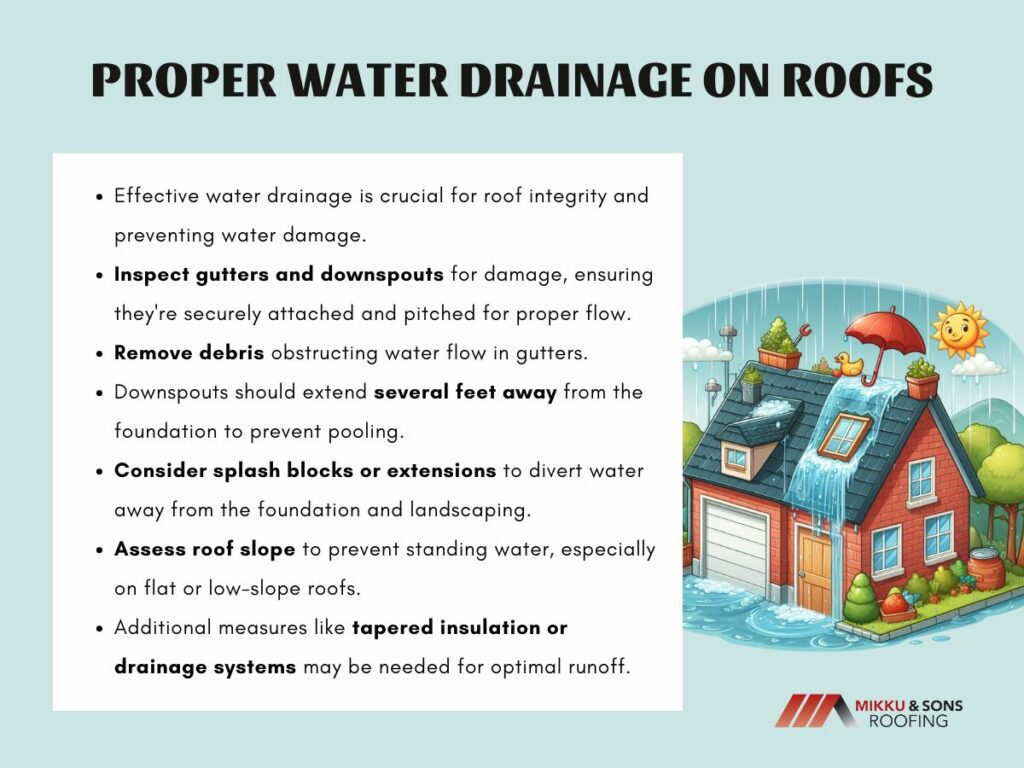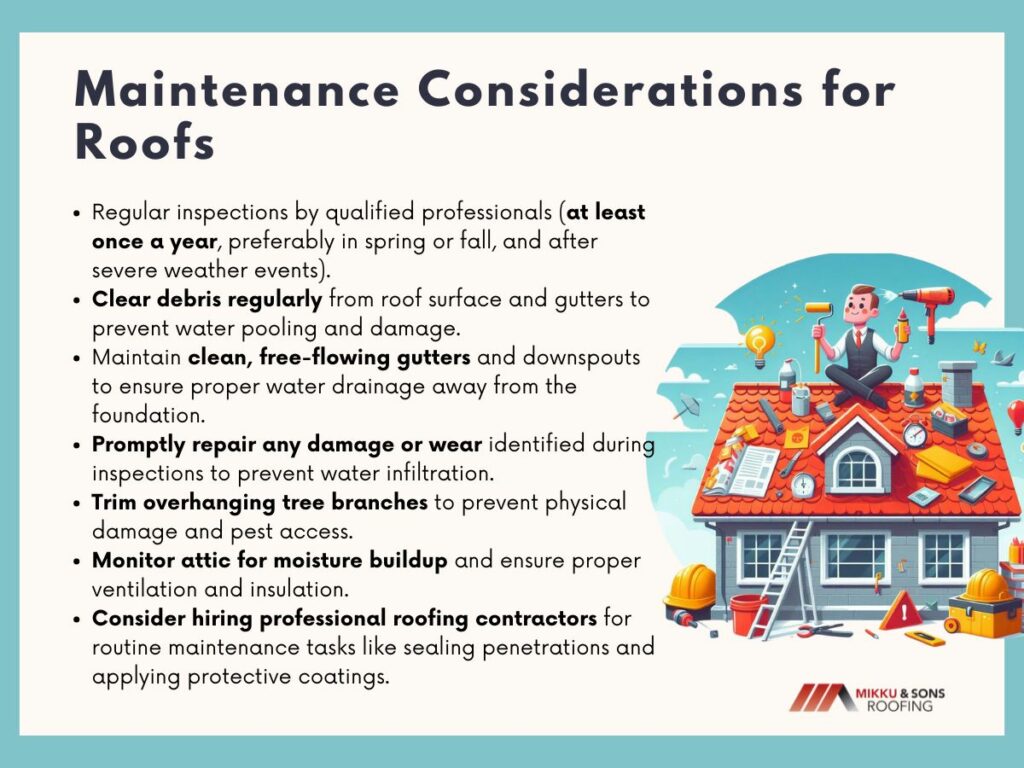

A well-installed roof is not just a matter of aesthetics; it's a critical component of your home's structural integrity and protection against the elements. Whether you're building a new home or replacing an existing roof, assessing the quality of the installation is paramount.
A properly installed roof not only enhances the curb appeal of your property but also provides peace of mind knowing that your home is safeguarded against leaks, moisture damage, and other potential hazards. The process of assessing the quality of a roof installation involves a comprehensive evaluation of various factors. Let's look how to assess the quality of a roof installation.
A visual inspection of the roof's exterior serves as the first step in identifying any visible signs of damage, wear, or installation errors. Taking the time to thoroughly inspect the roof's surface can reveal potential issues that may need further attention.
During the initial inspection, it's crucial to carefully examine the condition of the shingles or roofing materials.
Assessing the roofing materials involves evaluating their durability, suitability for the climate, and adherence to industry standards. Before installation begins, it's essential to verify that the selected materials meet the requirements for the specific roofing project.
When assessing roofing materials, consider factors such as the type of shingles or roofing tiles being used.
The quality of installation techniques employed significantly influences the performance and longevity of a roof. Proper installation requires adherence to industry best practices, manufacturer guidelines, and local building codes.
Assessing installation techniques involves evaluating the craftsmanship and attention to detail demonstrated by the roofing contractor or installation team.
Effective water drainage is essential for preserving the integrity of the roof and preventing water damage to the underlying structure. Assessing water drainage involves evaluating the functionality of gutters, downspouts, and other components designed to channel water away from the roof and foundation of the home.

Proper water drainage helps prevent issues such as roof leaks, mold growth, and foundation damage.
An energy-efficient roof not only helps reduce utility bills but also minimizes environmental impact by lowering energy consumption. Evaluating the energy efficiency of a roof involves considering factors such as insulation, ventilation, and the choice of roofing materials.
While a homeowner's initial assessment of a roof installation is valuable, a professional inspection conducted by a qualified roofing inspector provides an in-depth evaluation of the roof's condition and performance. A professional inspection is essential for identifying hidden issues, assessing structural integrity, and ensuring compliance with industry standards and building codes.
Here's why a professional inspection is crucial:
Professional roofing inspectors have specialized knowledge and experience in evaluating roofs of all types and identifying potential problems that may not be apparent to the untrained eye. They are familiar with common issues associated with different roofing materials and installation techniques, allowing them to provide accurate assessments and recommendations.
A professional inspection involves a thorough examination of all aspects of the roof, including the roofing materials, flashing, ventilation, and drainage systems. Inspectors use specialized tools and techniques to assess the condition of the roof and identify any signs of damage, deterioration, or installation errors.
They also inspect the attic space for signs of moisture intrusion, inadequate insulation, or ventilation issues that may affect the roof's performance.
Professional roofing inspectors are trained to assess roofs according to industry standards, manufacturer specifications, and local building codes. They ensure that the roof installation meets all necessary requirements and complies with relevant regulations.
Some inspectors may also hold certifications or memberships in professional organizations, indicating their commitment to high standards of professionalism and ethics.
Following the inspection, the roofing inspector provides a detailed report outlining their findings, including any areas of concern, recommended repairs or maintenance, and estimated costs. The inspection report serves as a valuable tool for homeowners, providing them with the information they need to make informed decisions about their roof and prioritize any necessary repairs or improvements.
By hiring a professional roofing inspector, homeowners can have confidence in the condition and performance of their roof. A thorough inspection can uncover potential issues early on, allowing for timely repairs or maintenance that can help prevent more extensive damage and costly repairs in the future.
At the end of the day, knowing that their roof has been professionally inspected provides homeowners with peace of mind and reassurance that their investment is protected.
Maintaining a roof in good condition is crucial for preserving its longevity and performance over time. Regular maintenance helps prevent minor issues from escalating into major problems, prolongs the life of roofing materials, and protects the home from water damage and other hazards.

Here are some important maintenance considerations for homeowners:
Schedule periodic roof inspections by a qualified professional to assess the condition of the roof and identify any signs of damage or deterioration. Inspections should be conducted at least once a year, preferably in the spring or fall, and after severe weather events such as storms or heavy rainfall.
Remove debris such as leaves, branches, and dirt from the roof surface and gutters regularly. Accumulated debris can block drainage systems, causing water to pool on the roof and increase the risk of leaks and water damage.
Keep gutters and downspouts clean and free-flowing to ensure proper water drainage away from the home's foundation.
Address any signs of damage or wear identified during inspections promptly. Repair cracked or missing shingles, damaged flashing, and deteriorated sealant to prevent water infiltration and maintain the integrity of the roof.
Trim back overhanging tree branches that may pose a risk to the roof, especially during storms or high winds. Branches can cause physical damage to the roof surface and gutters and provide a pathway for pests such as squirrels or raccoons to access the roof and attic space.
Check the attic regularly for signs of moisture buildup, such as water stains, mold, or mildew. Proper attic ventilation and insulation are essential for preventing condensation and moisture-related issues that can compromise the integrity of the roof structure and insulation.
Consider hiring a professional roofing contractor to perform routine maintenance tasks, such as sealing roof penetrations, inspecting and repairing flashing, and applying protective coatings or sealants as needed. Professional maintenance ensures that the roof remains in optimal condition and can extend its lifespan significantly.
Phoenix, Arizona has temperatures that can soar to extreme highs which highlights the importance of roofing insulation technique. However air conditioning costs can skyrocket during the sweltering summer months, which hilhights the role of proper insulation.
Roofing insulation serves as a barrier against heat transfer, helping to keep homes cooler and more comfortable while reducing the strain on air conditioning systems. It also helps prolong the lifespan of roofing materials by minimizing thermal expansion and contraction, which can lead to premature deterioration.
In a desert climate like Phoenix, where water scarcity is a constant concern, roofing insulation can also help conserve water by reducing the need for excessive cooling.
